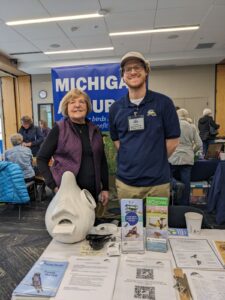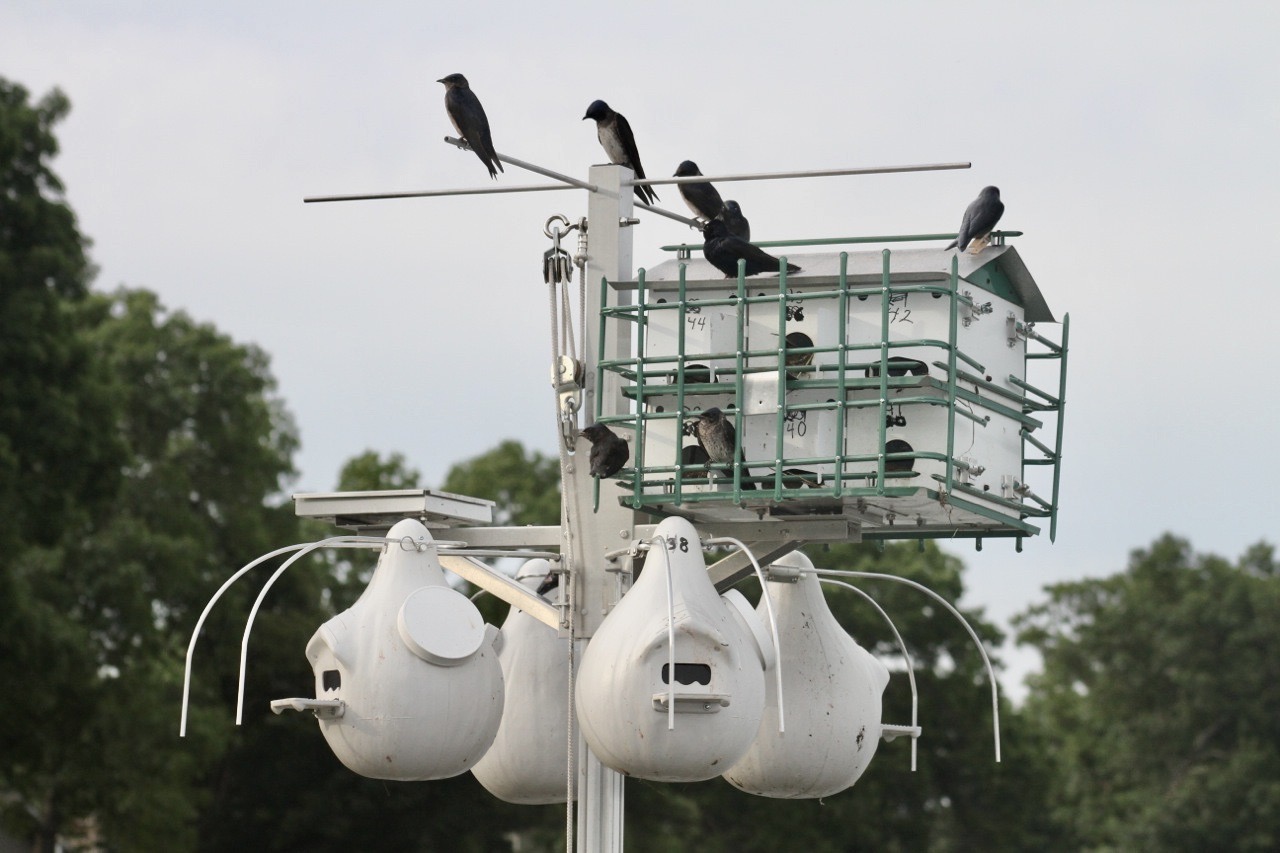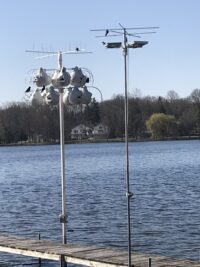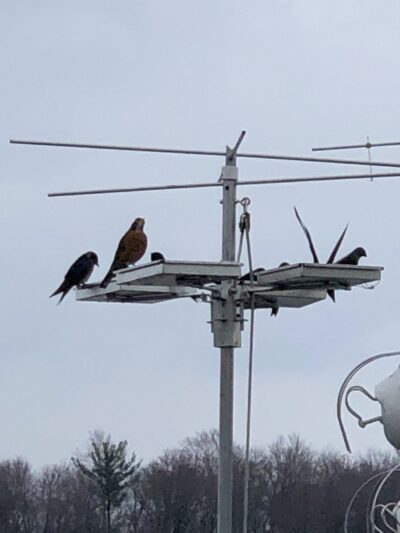Feeding Purple Martins during weather-related insect declines is a landlord management practice that can save the lives of these beloved birds. Because they are aerial insectivores, only eating insects on the fly, they suffer greatly during prolonged periods of cold, excessive wind, or lack of rain or too much rain. Insects are in short or nonexistent supply during these times, and both adults and their chicks will begin to decline and ultimately perish without supplemental feeding after at least two days of such weather events. In addition, both adults and chicks will be healthier if they have had ample nourishment during their stay at your colony — and fledge rates are likely to increase.
The problems with feeding efforts are many. Most importantly, Purple Martins will not come to a typical feeder and must be given insects such as crickets or fresh (preferably live) mealworms up high near the colony. Many people have successfully tossed the food in the air or shot it upward with a slingshot or a plastic spoon bent downward and released to spring the prey. Another (easier) way to feed Purple Martins is to condition them to eat from a high-up tray (with sides) near the nest cavities or by placing food directly on the housing or gourd porches or even inside a nest cavity. In order to do this successfully, the crickets must be dead, and the live mealworms can be a problem without a feeding tray as they tend to crawl away and off of the housing if birds do not eat them immediately. I have not had luck with dried mealworms, but I have heard that some people have success with this, especially if the dried mealworms are soaked in water first. Many people also offer crushed eggshells regularly if they are sanitized at 200 degrees for 15 minutes.
Here is my tried-and-true experience with supplemental feeding:
I order crickets (7/8-to-1-inch size) and mealworms (7/8-1-inch size) 5,000 or more at a time over the internet from a supplier that ships them quickly (within 24-48 hours). When they arrive alive at my front porch, I quickly transfer mealworms to a plastic bin with shredded newspaper, yellow cornmeal, and a few pieces of fresh potato or carrot. They can be kept alive in this way for weeks if kept cool but not frozen and periodically fed. The crickets are plunged live into my chest freezer and then, when frozen, transferred quickly to quart jars for storage in the freezer for use during times of need. I keep a supply on hand from mid-March throughout the summer.
When the birds first start arriving in Michigan, they are usually hungry, so I often offer a few tidbits and watch to see if they eat them. I personally had no luck firing food into the air with a slingshot, so I trained my visitors to tray feed. I purchased the Bed and Breakfast feeder available from the online store at the Purple Martin Conservation Association (purplemartin.org). It comes with a separate pole that can be raised and lowered so as not to disturb stressed birds by lowering their housing. When I think the birds are hungry, I try placing a few crickets and/or mealworms and observe the results. If they come to the feeder, I then add to the trays, sometimes an entire quart of thawed crickets at a time (if I have a lot of adult birds and/or chicks). The live mealworms are added sparingly into the mix but add movement. If one bird learns to eat from a tray, others will follow, especially when hungry. It is very important to keep the feeding trays sanitized to prevent the spreading of disease.
I have experimented and, through this, have learned that the birds will not eat supplementally if there are plenty of insects on the fly. But often in the summer, during seemingly windy, dry, or wet times, I offer a few crickets to test if they are in need while they have chicks. Once, upon watching an adult male, I observed 16 consecutive trips to the feeding tray to save his brood. I also noted another male who lost his mate and then heroically raised five young, single-handedly, while depending periodically on the feeding tray.
The Purple Martin Conservation Association recommends supplemental feeding, and I can think of nothing sadder in nature than watching chicks perish when it could have been prevented or finding deceased adults in the nest cavities during times when I could have helped them. There is obviously a financial cost involved, and it is possible to defray the costs of at least mealworms by raising them yourself. However, as with any important endeavor in which people are involved, the expense often reaps positive, satisfying results. I have had many people call me in desperation when it is often too late to find enough crickets or mealworms locally. So, if you want to make a big difference at your Purple Martin colony, don’t delay. Be ready for the season with a supply of supplemental food.

Penny Briscoe is a long-time Purple Martin landlord with decades of expertise. She is happy to provide advice to fellow Purple Martin enthusiasts and can be reached through the Facebook group “Michigan Purple Martin Friends” or the Purple Martin Conservation Association’s martin mentor program.
You can read more about Penny and the work she does for Purple Martins in Community Spotlight: Rick and Penny Briscoe, an article originally published in the 2021 spring issue of the Jack Pine Warbler.
Bio Photo: Penny Briscoe (left), the “expert” Purple Martin Landlord in Michigan, with MA Conservation Manager Chad Machinski (right). Penny hosted a table next to Michigan Audubon to assist in Purple Martin conservation efforts at the 2024 Michigan Bluebird Festival. Photo by Murphy Harrington
Purple Martin Conservation in Michigan
Understanding where current Purple Martin colonies are in Michigan is an important step in conservation. Michigan Audubon is building a map of these current and historic locations, as well as collecting end-of-season nest reports. If you have data to share — please use the forms below to register your colony or contact us to discuss other data upload options.



